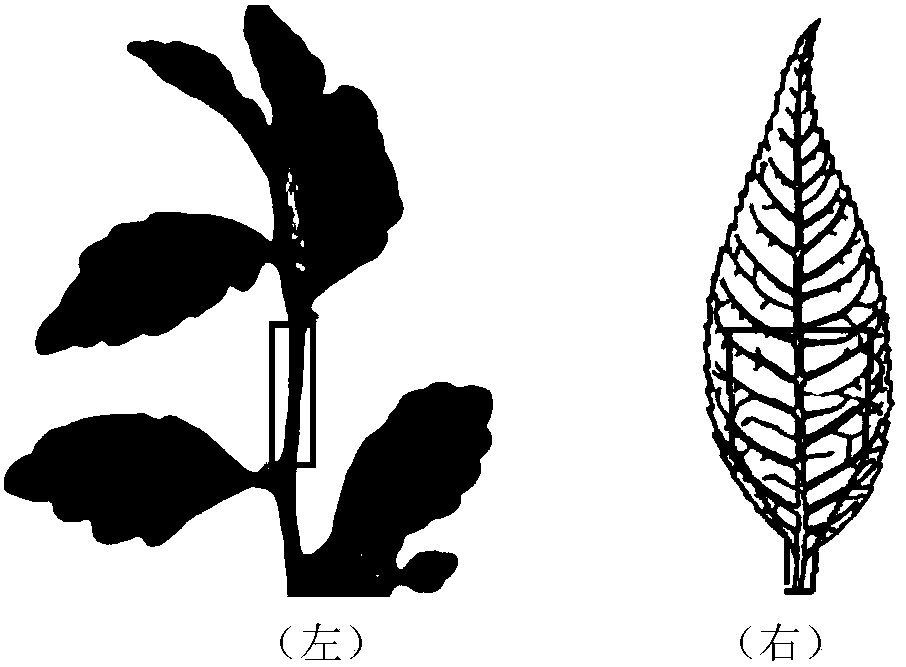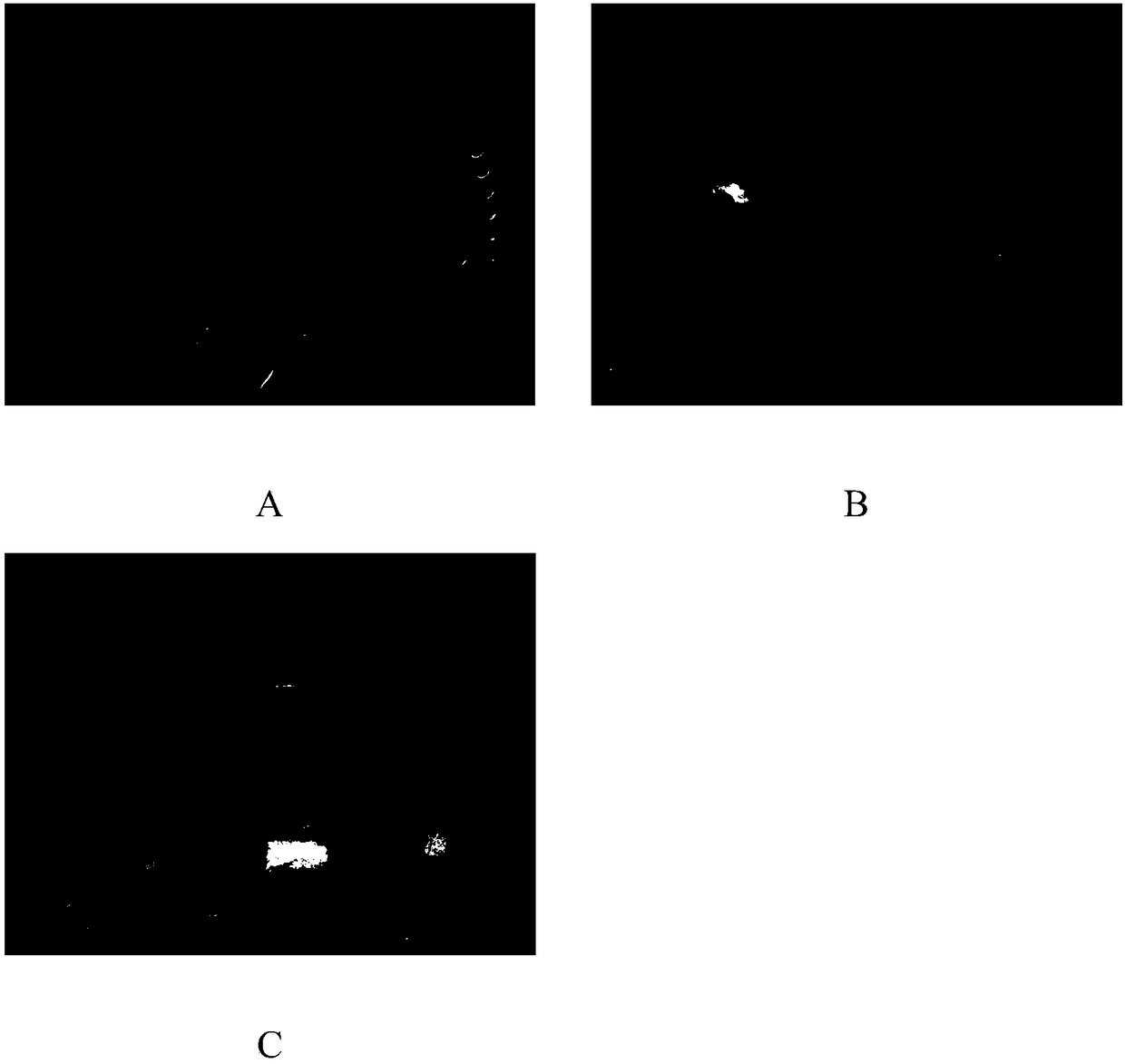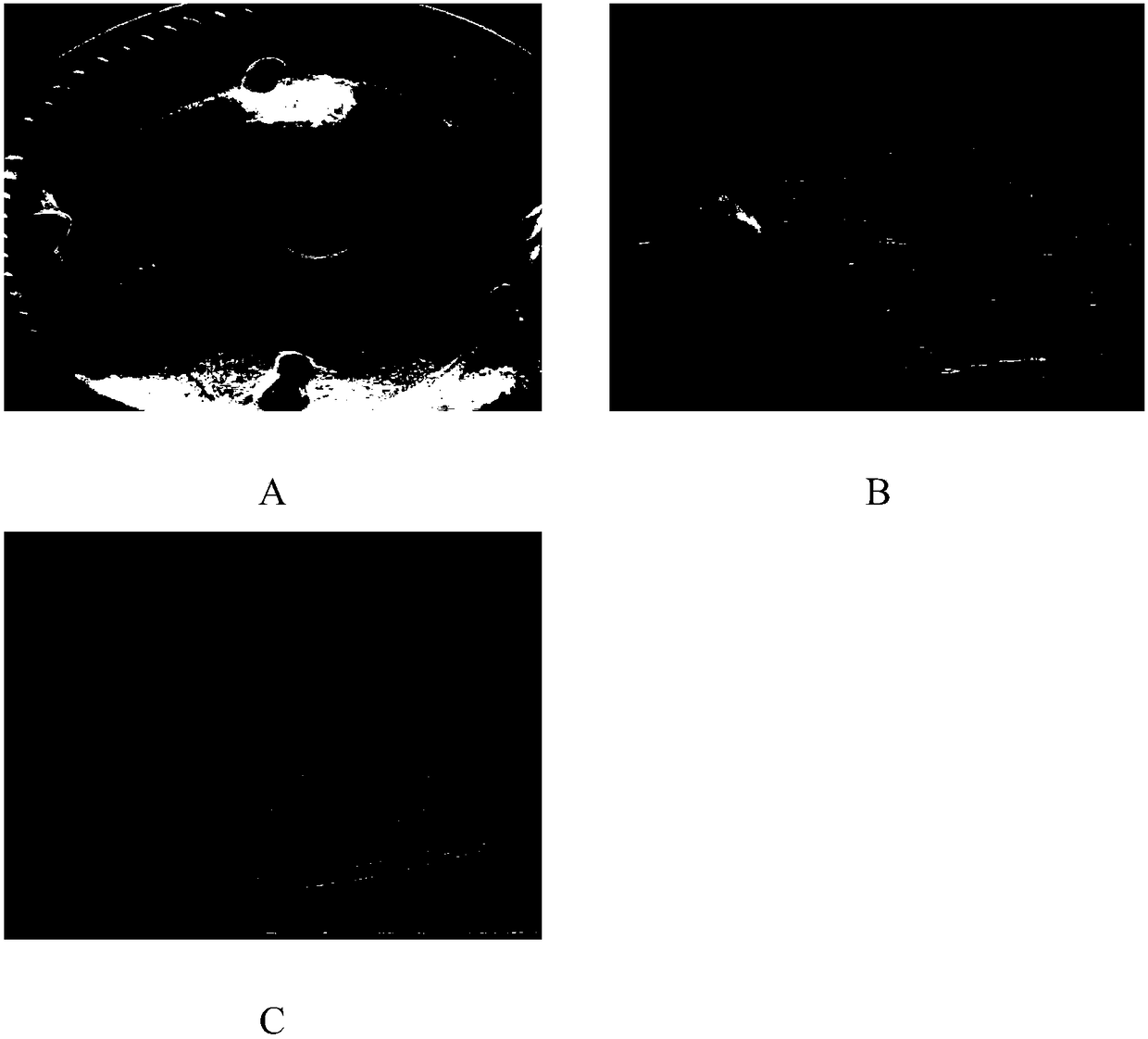A method for induction and differentiation of leaf callus of saline-alkali-tolerant fast-growing Ulmus ulma clone
A technology of callus induction and callus, which is applied in horticultural methods, botany equipment and methods, plant regeneration, etc., can solve the problems of high cost, resources, waste, and low differentiation rate of callus adventitious buds, and achieve It is suitable for industrial production, the effect of increasing the differentiation rate and the callus induction rate
- Summary
- Abstract
- Description
- Claims
- Application Information
AI Technical Summary
Problems solved by technology
Method used
Image
Examples
Embodiment 1
[0027] (1) Selection of explants: callus-induced explants of saline-alkali-tolerant fast-growing Ulmus spp. clones originate from rooted seedlings cultured in the factory of Ulmus elm, that is, to select robust growth, stretched leaves, tissue-cultured seedlings with plant height > 2.5cm, Rooted seedling leaves (including petioles) or stems with uniform growth were used as callus induction materials.
[0028] (2) Explant treatment: according to figure 1 (Left) Cut the area shown, and cut the robust stem segment between the second leaf and the fifth leaf from top to bottom of the tissue cultured seedling. When cutting, the parts with axillary bud nodes are removed, and only the internode parts are taken as test materials, and the cutting length is about 0.3-0.4 cm. After cutting, insert the stem section into the medium in time, place the stem section horizontally on the surface of the medium, inoculate 5 stem section materials in each bottle (diameter 6.5cm; height 9.5cm) medi...
PUM
 Login to View More
Login to View More Abstract
Description
Claims
Application Information
 Login to View More
Login to View More - R&D
- Intellectual Property
- Life Sciences
- Materials
- Tech Scout
- Unparalleled Data Quality
- Higher Quality Content
- 60% Fewer Hallucinations
Browse by: Latest US Patents, China's latest patents, Technical Efficacy Thesaurus, Application Domain, Technology Topic, Popular Technical Reports.
© 2025 PatSnap. All rights reserved.Legal|Privacy policy|Modern Slavery Act Transparency Statement|Sitemap|About US| Contact US: help@patsnap.com



